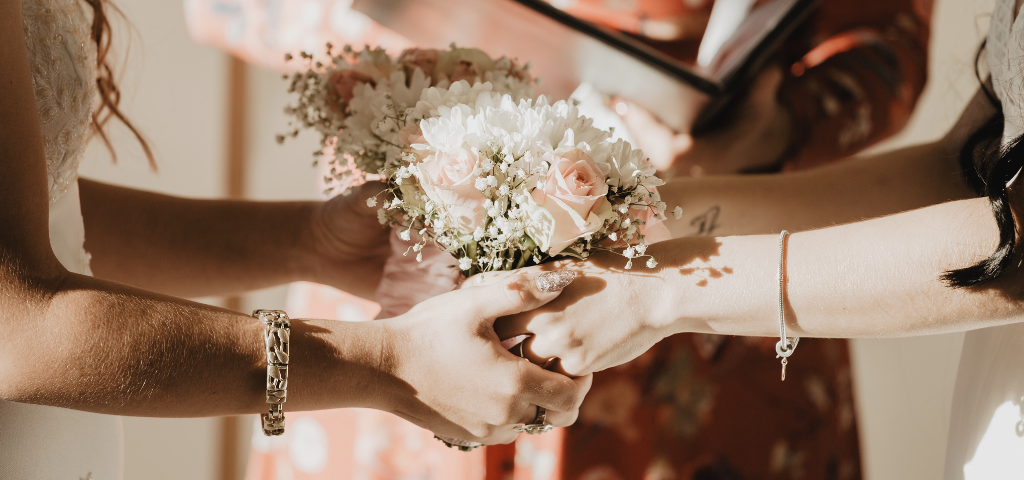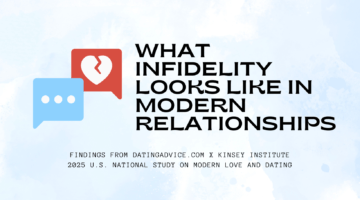The Relationship Status of LGBTQ Americans
February 28, 2022 by Justin Lehmiller
Same-sex marriage has been legal throughout the United States since 2015. So what percentage of the LGBT population is currently married now that marriage is no longer restricted based on sexual orientation? Let’s take a look.
Gallup recently interviewed over 12,000 American adults, of whom about 5.5% identified as LGBT (or reported an identity other than heterosexual). Here’s the current relationship status of LGBTQ+ Americans:
- 21% are currently married; however, this number is split nearly 50-50 between those who have a same-sex spouse and those who have a different-sex spouse. In other words, just about 10% of LGBTQ+ adults are in a same-sex marriage.
- 17% are living with a partner; however, two-thirds of them are living with a different-sex partner, while the remaining third are living with a same-sex partner.
- 53% are single and have never been married.
- 8% are either separated or divorced.
- 2% are widowed.
So how do these numbers break down when you look at different segments of the community? The sample wasn’t large enough to look at relationship status for those who identify as transgender or who identify as anything other than gay, lesbian, or bisexual. So we can only do a comparison of gay/lesbian and bisexual adults with these data. That said, a few notable differences emerged:
- Gay and lesbian adults are more likely to be married than bisexual adults (25% vs. 19%, respectively).
- Of those who are married, almost all gay and lesbian adults have a same-sex spouse (just 4% of married gays and lesbians have a different-sex spouse); by contrast, most bisexual adults are married to different-sex spouses (just 16% of married bisexuals have a same-sex spouse).
- Also, while most bisexual adults (56%) are currently single, most gay and lesbian adults (51%) are in relationships.
There are several interesting takeaways from these data. First, since same-sex marriage became legal nationwide, the number of LGBTQ+ Americans who have entered a same-sex marriage has remained remarkably stable at around 10%. While this might intuitively suggest that the overall number of same-sex marriages is not really changing, this may be obscured by the fact that the overall size of the LGBTQ+ community has grown.
In fact, since 2015, the number of Americans identifying as LGBTQ+ on Gallup polls has grown from 3.9% to 5.6%. Most of that growth has been among those identifying specifically as bisexual. So even though the percentage of the community that is in a same-sex marriage hasn’t changed, the fact that the size of the community is now much larger would suggest that the sheer number of same-sex marriages has probably increased considerably.
Second, the fact that most bisexual adults are single may reflect two things. One is that young bisexuals actually make up the largest contingent within the LGBTQ+ community. Thus, it could be that this is more an effect of this demographic being younger than anything, given that younger people are simply less likely to be in relationships.
On the other hand, we also know that bisexual stigma (biphobia) is real, and that both gay and heterosexual persons report relatively low willingness to date bisexuals. This may stem from common stereotypes of bisexuality as not being a real or valid orientation (which just isn’t true!). That said, it may be that some combination of both youth and biphobia is the key to understanding the higher rates of bisexual singlehood.
Finally, it’s worth noting that not everyone who identifies as gay or lesbian and is married necessarily has a same-sex spouse. There are any number of reasons why this might be the case. For example, someone might have been in a different-sex marriage but came out later in life. A marriage like this might end, or it might continue if the partners decide it is in the best interests of their children or finances (or because each thinks of the other as their best friend). Likewise, I’ve spoken to some gay men and lesbians who have married each other for various reasons, often out of convenience (e.g., to please family, access insurance benefits, etc.).
Regardless of the reason, however, this is further evidence that our identities and behaviors do not always line up in the ways that you might expect.
Want to learn more about Sex and Psychology? Click here for more from the blog or here to listen to the podcast. Follow Sex and Psychology on Facebook, Twitter (@JustinLehmiller), or Reddit to receive updates. You can also follow Dr. Lehmiller on YouTube and Instagram.
Image Source: Photo by Sofia Hernandez on Unsplash

Dr. Justin Lehmiller
Founder & Owner of Sex and PsychologyDr. Justin Lehmiller is a social psychologist and Research Fellow at The Kinsey Institute. He runs the Sex and Psychology blog and podcast and is author of the popular book Tell Me What You Want. Dr. Lehmiller is an award-winning educator, and a prolific researcher who has published more than 50 academic works.
Read full bio >


